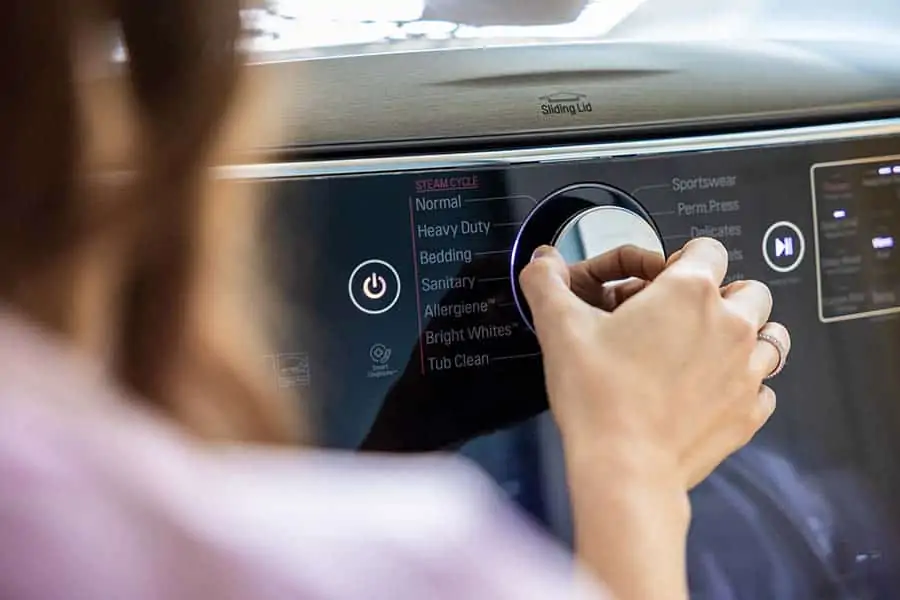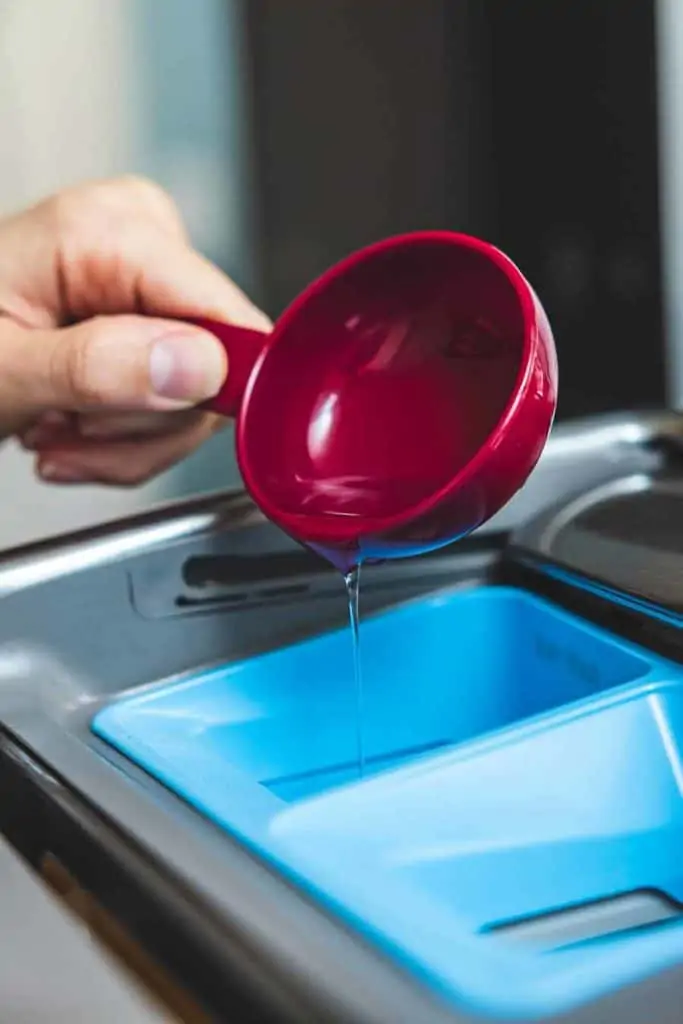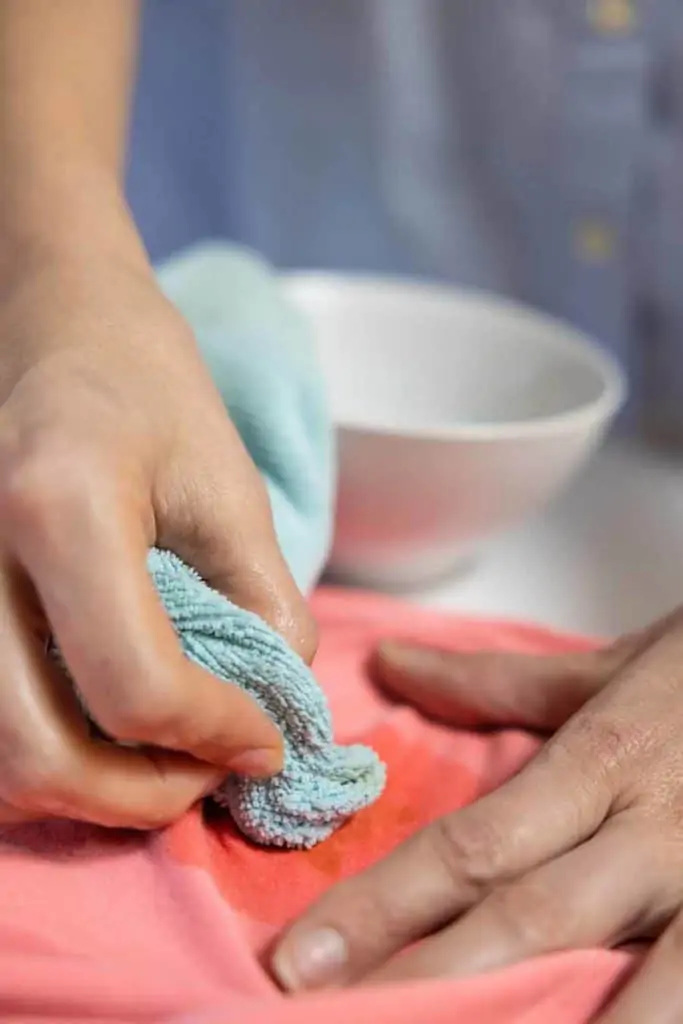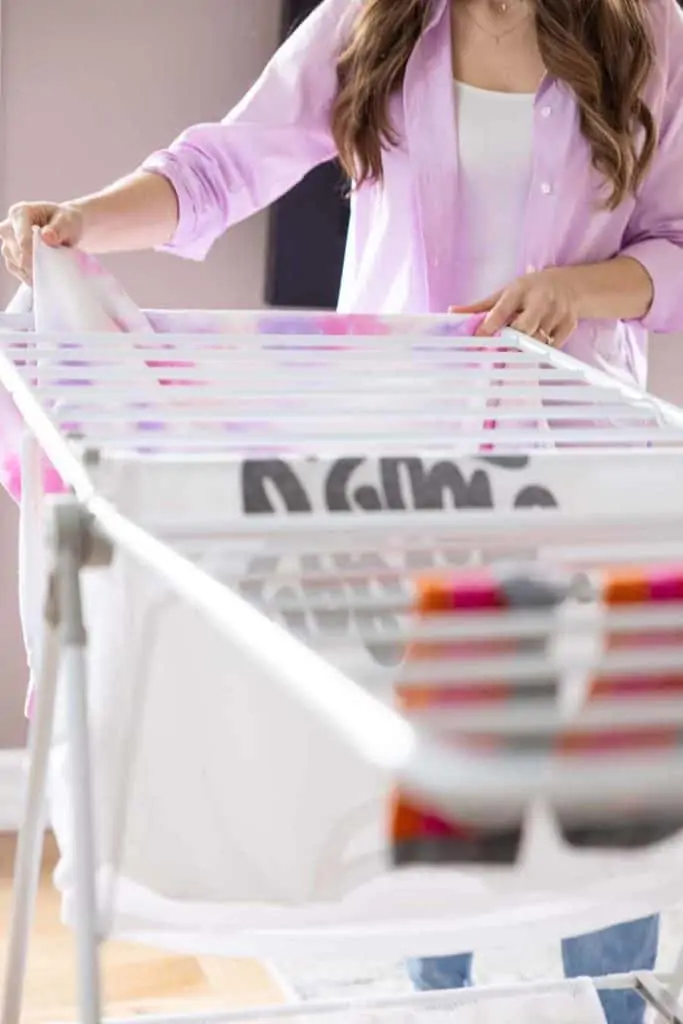Hey, laundry lovers (and haters)! Whether laundry day is your least favorite day of the week or the day you look forward to the most (and if it is, who are you?!), you need to know the controls on your washing machine.
WAIT, DON’T GO! I know you’re probably thinking, “Melissa, I already know about the buttons on my washing machine, duh.” But let me ask you a question. Do you really know about all the load sizes, water levels, temperature cycles and controls, rinse and spin settings, and OMG, the list goes on and on.
While knowing all the ins and outs of your washing machine might not be your life’s goal, it will absolutely help you do your laundry better. And when you do your laundry well, you avoid damaging clothing, overusing water and electricity, and (most importantly) having to rewash items.
So take a few minutes to read this article and become the laundry expert you didn’t know you wanted to be, and you will never have to worry about laundry problems again… unless your washing machine breaks or your toddler throws Play-Doh in with your delicates.

Washing Machine Settings
OK, it’s laundry day. You’ve gathered your laundry, and you are ready to chuck it in the washing machine. But before you start your washer, you must make three choices:
- Load size and/or water level
- Water temperature for wash and rinse cycles
- Cycle setting
But what does it all mean?! Let’s find out now.
Load Size
Knowing your load size is actually really important. If you set your load size larger than necessary, you can waste a lot of water and energy. And if you set it smaller than needed, you can actually damage your machine, or at the very least, discover your clothes aren’t thoroughly cleaned.
Washing machines have three load size options.
- Small Load: Approximately one-quarter full
- Medium Load: Approximately one-half full
- Large Load: At capacity
Be warned, never fill a washing machine beyond its capacity.
If you’re working with a newer washing machine, you might not have a load size option. That’s because modern washing machines often have built-in sensors that determine how much clothing is in the drum and automatically adjust settings accordingly.
If you have a modern washing machine, instead of load size options, you might see an option for a Fast / Speed cycle. This option sets your washing machine to work more quickly than normal and is meant only for smaller loads.
Water Temperature
Have you ever noticed your turquoise shirt or magenta sweater gets a little less vibrant each time you wash it? The culprit could be water temperature. Choosing the right water temperature for each load can prevent clothes from fading, stretching, and shrinking.
The old rule (I’m looking at you, mom) was to wash items in hot water. However, many of today’s fabrics are more sensitive and damaged by hot water. Why our parents used to wash exclusively in hot is because hot water was recommended to dissolve powdered detergent.
Thanks to the laundry angels, and science, we don’t have to use powdered detergent anymore. And most quality detergents made today are made to yield excellent results, even with cold water.
The detergent you choose should tell you the optimal temperature. And don’t forget to always check care labels on clothing. But let’s go through a quick rundown of each water temperature here.

Cold Water
Cold water is best for dark colors, delicate fabrics, and items you don’t want to shrink. Cold water also reduces energy uses and lowers utility costs, so I always choose a cold cycle when possible.
Warm Water
Warm water is best for synthetic fabrics and colored items that are heavily soiled. It also works well for most knits, jeans, sheets, and towels.
Hot Water
Hot water is best for white cotton fabrics that need a deep clean, like socks, underwear, and bedsheets. Wash kids’ clothes and soiled industrial work clothes in hot water to ensure they’re truly clean.
Pro Laundry Tip
I always wash in cold water, because it’s easier on my clothes and on the environment. When I encounter a stain, I use a stain pretreater, a scoop of oxygen bleach, or a laundry detergent with built-in disinfectant before I run the cold cycle. This also works if you’re worried about killing germs but still want to wash in a cold cycle.

Washing Machine Cycle Settings: Speed / Time
After you’ve set your load size and temperature, it’s time to deal with the cycle setting. This is where laundry-doers are most likely to get confused. Medium, long, high? Where does it end, and what is the right setting, speed, and length of wash to choose? Let’s break it down.
Normal / Colors Cycle: HIGH / LONG
This is a fool-proof, general-purpose option for most fabrics. It works well for cotton, linens, sheets, towels, underwear, heavily soiled items, and more. This cycle usually uses a high spin and has a long duration, so be prepared to wait a little longer.
Heavy-Duty and/or Whites: HIGH / LONG
The heavy-duty setting is intended for large loads of sturdy, colorfast fabrics as well as heavily soiled items. Think heavy bedding, blankets, comforters, and rugs. This setting has an extra spin cycle to help get rid of extra water that might be absorbed by heavy fabrics.
The whites cycle is designed for bleachable white items. This cycle dispenses liquid chlorine bleach during the washing process, so make sure your laundry is white when using this setting.
Sanitize Cycle: HIGH / LONG
Not all machines have this option, but some newer models have a sanitize cycle. This setting is great for health care workers who need to wash work items and scrubs, as well as young families that use washable cloth diapers. It’s also great for people who work with pets.
The sanitize cycle is designed to reduce or eliminate germs and bacteria and prevent these germs from contaminating future cycles. The sanitize setting does this by using steam or hot water at a temperature of at least 165 degrees Fahrenheit–hot enough to destroy germs.
Fast / Speed / Quick Cycle: HIGH / SHORT
This cycle is probably the fastest cycle you’ll have on your machine; however, it can only be used for a small load of lightly soiled garments. Because this setting has a shortened wash cycle and a high-speed spin, I wouldn’t recommend it for heavily soiled or delicate items.
But here’s another professional cleaning trick for you, if you ever accidentally leave clothes in the washing machine for too long, use this cycle to quickly refresh them before you dry.

Wrinkle Free / Permanent Press / Activewear: MED / MED
This is an excellent setting for synthetic fabrics and lightly soiled garments. It’s also a good option for dress shirts, dress pants, general office wear, and other items that wrinkle easily (silk, linen, loose-weave cotton).
This cycle minimizes wrinkles and preserves fabrics that are prone to wearing out quickly. If you have more than one of these cycles on your machine, the difference is probably the length of the cycle.
Delicate / Hand Wash – LOW / MED
If you have this cycle, it’s an excellent choice for delicate items like bras, lingerie, silks, and other items labeled “hand wash only” or “gentle wash.”
This cycle usually runs at a lower speed and shorter wash, which prevents stretching and ripping of delicate items. If you have two options for this on your machine, the hand wash cycle is typically a shorter cycle on a lower spin setting.
Washing Machine Cycles: Other
Phew, that was a lot of information, but it’s not over yet! Keep reading to be a true washing machine expert.
Steam
Many washers now offer a steam cycle. Ironically, this washing machine cycle doesn’t actually wash clothes. Use it to quickly remove wrinkles or freshen a garment, not for deep cleaning.
Rinse and Spin
This cycle does not use detergent or provide deep cleaning. It simply rinses and then spins out the moisture from fabrics.
Drain and Spin
Drain and spin spins off excess water. Only use it if the first spin has left the clothes wet instead of damp.
Basket Clean
Before you use this cycle, you should absolutely consult a manufacturer’s instructions. Before use, ensure the washing machine is completely empty. Then, add bleach, vinegar, or a washing machine cleaner as directed in the manufacturer’s instructions.

Washing Machine Controls Unlocked!
If you made it to the end of this article, you are officially an expert on all things… that have to do with washing machine settings. Use this information to wow your party guests or to make sure you’re doing your laundry on the optimal cycle every time.
Do you have other settings on your washing machine we didn’t cover? Please let us know in the comments! And for more information on laundry (yes, there’s always more information on laundry), read 5 Annoying Laundry Problems Solved and What is Oxygen Bleach?: Laundry Tips.
Looking for a BETTER & EASIER Way to Clean Your Home?
Cleaning Expert Melissa Maker is here to help with her game-changing 3 Wave Cleaning System that will help you clean your house faster and easier than you ever thought possible!


















what is the settings for? 2X – 6X
[…] Washing Machine Controls Article: https://cleanmyspace.com/washing-machine-controls […]